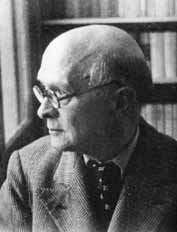Denis Saurat
Two Atlantises
Two Atlantises have been proposed by some commentators in order to explain some of the difficulties in Plato’s tex t. While the concept has been adopted in principle, the locations chosen vary.
Lewis Spence was probably the first to suggest the idea, followed by D. Duvillé and>Denis Saurat while more recently Jürgen Hepke has followed suit, suggesting that the first Atlantis was situated in the Bermuda Triangle and was destroyed around 9500 BC(a) and the second in the Mediterranean region which met its end circa 1250 BC(b)!<
The Russian Atlantologist Vladimir Scherbakov has promoted the idea of one Atlantis in the Atlantic and a second one incorporating major cities in the Eastern Mediterranean. He believed that migrants from the Atlantic original had peopled the second one.
It is clear that Plato describes two Atlantises separated by both time and geography. One was the Stone Age culture, briefly referred to by Plato and the other was the Bronze Age society that he describes in much greater detail. This apparent contradiction is easily explained if we accept that the original Atlantis was preliterate and in common with all very ancient peoples their achievements would have been clouded by the mists of time before committed to writing. Not unreasonably, to make up for a lack of detail, Plato would have overlaid the oral tradition with the attributes of an advanced civilisation of his own era, something that his audience could identify with. Such a literary device would have been within the bounds of artistic licence at that period.
Pauwels & Bergier in their book, The Morning of the Magicians[910], also proposed two Atlantises, an earlier one at Tiwanaku in the Andes and a later one in the Atlantic destroyed by “waters from the north”, recorded as Noah’s Flood in the Bible!
Not content with two Atlantises, Diego Marin, Ivan Minella & Erik Schievenin went one further in 2013, when they proposed three Atlantises in their book The Three Ages of Atlantis[972].
(a) http://web.archive.org/web/20170320150848/http://tolos.de/Book2.htm *
(b) http://web.archive.org/web/20170716221143/http://www.tolos.de/History%20E.htm (See Book 6) *
Saurat, Denis
Denis Saurat (1890-1958) was born in Toulouse and educated in Britain and France. He was a professor of French literature and lectured in both countries. He also had a lifelong interest in the occult among a wide range of subjects. One of his conclusi ons was that the worldwide megalithic remains of prehistory are evidence for the existence of a race of giants in our dim and distant past. His books[536][537] discuss this idea in detail including supporting hints from the Bible and then link the entire concept with Plato’s story of Atlantis. Saurat also suggested that the use of electricity in ancient Egypt produced gleaming eyes in the statues of Isis in her temples.>This suggestion of electricity in early Egypt was recently revisited by an engineer Andrew Hall in a YouTube video(b).<
ons was that the worldwide megalithic remains of prehistory are evidence for the existence of a race of giants in our dim and distant past. His books[536][537] discuss this idea in detail including supporting hints from the Bible and then link the entire concept with Plato’s story of Atlantis. Saurat also suggested that the use of electricity in ancient Egypt produced gleaming eyes in the statues of Isis in her temples.>This suggestion of electricity in early Egypt was recently revisited by an engineer Andrew Hall in a YouTube video(b).<
Unfortunately, Saurat also seems to have borrowed many of the exotic concepts of Hans Hoerbiger such as a succession of moons crashing to earth. Saurat has added little to the solution of the Atlantis mystery.
He suggests two Atlantises, one about 30,000 years ago in the Andes around Lake Titicaca and the second 12,000 years ago described by Plato. Fortunately, Saurat is not arrogant and so in recognition of how scientific advances have a way of destroying previously held ‘certainties’, he admits in his summation (p118) that “despite all the evidence marshalled in this book, at no point can we say that we are absolutely sure.”
A further book[538] deals with the religion of the giants.
In 2003 the Canadian author, John Robert Colombo published a biography of Saurat[626].
A blog(a) from Jason Colavito offers further details of Saurat’s daft ideas.
(a) https://www.jasoncolavito.com/blog/atlantis-and-the-nephilim-in-the-work-of-denis-saurat
(b) Andrew Hall: Electricity in Ancient Egypt | Thunderbolts – YouTube *
